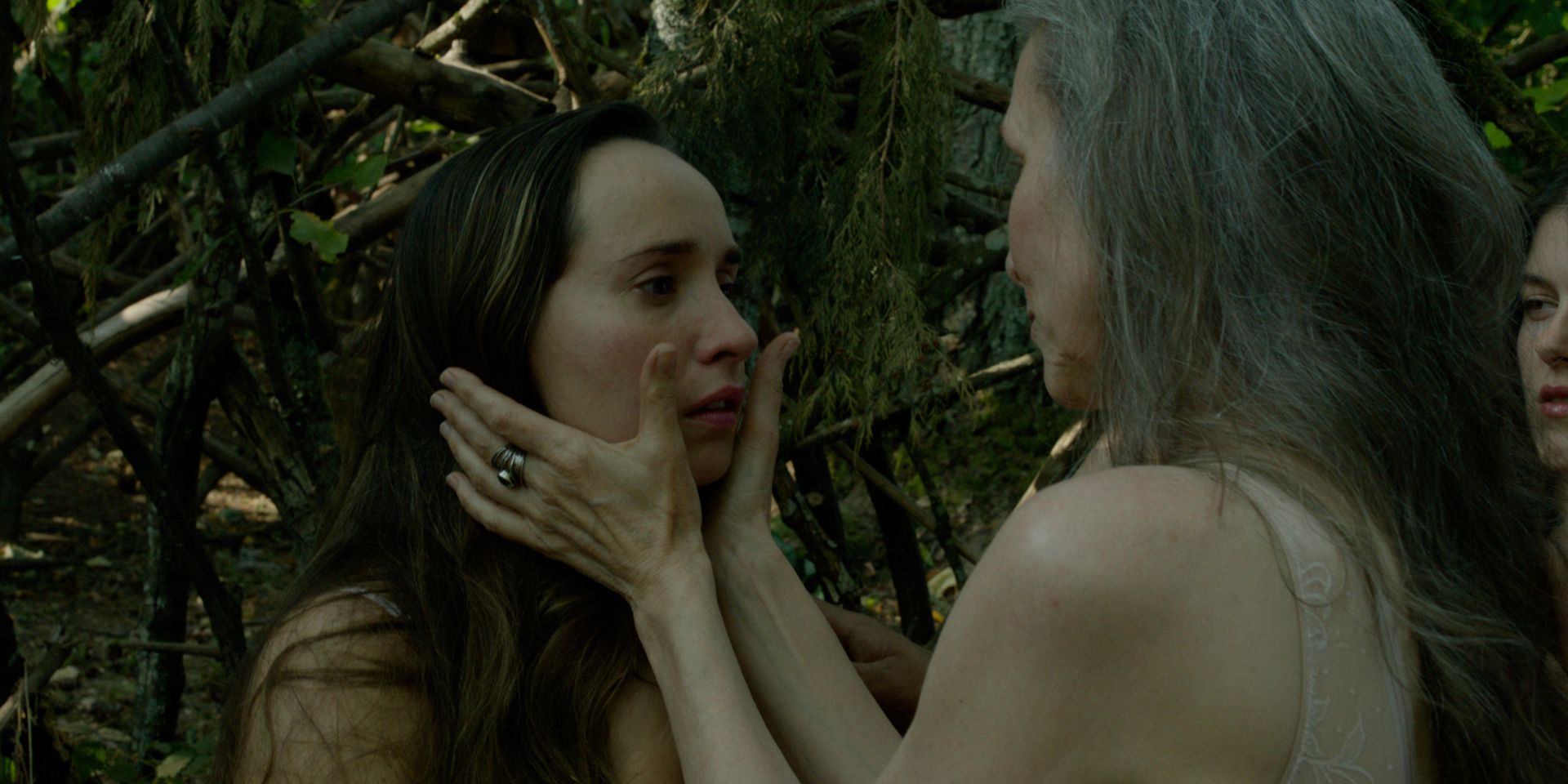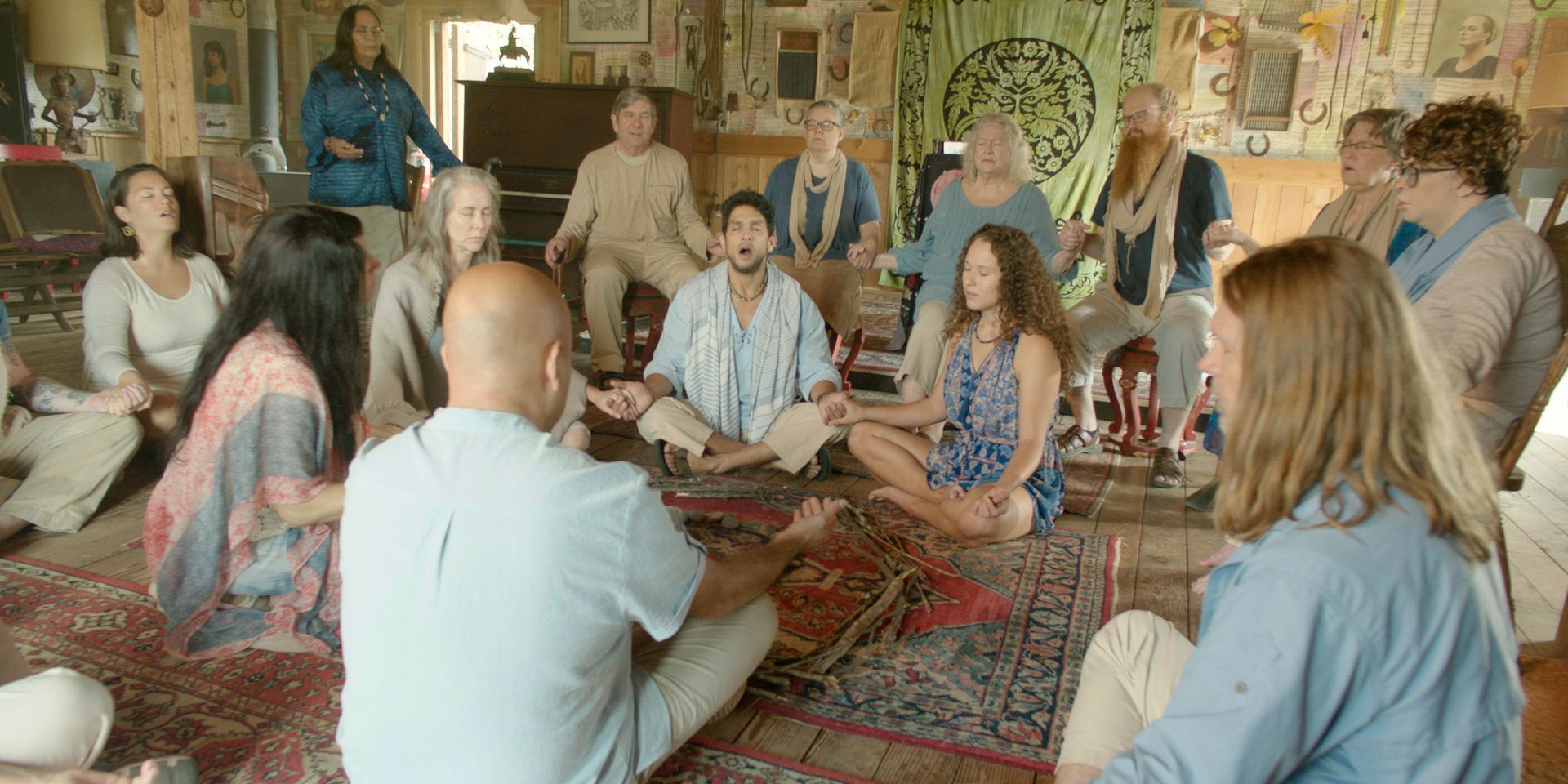Summary
- Summoning the Spirit is a film about a troubled couple who move to a house in the forest, only to discover they are living alongside a cult that worships a monstrous creature.
- Director Jon Garcia was inspired by Bigfoot sightings in the Portland area when developing the film, and also drew inspiration from cult movies and documentaries.
- The film was shot on location in Happy Valley, Oregon, at a venue called Pendarvis Farm, and the production team even went Bigfooting with professionals to enhance their understanding of the creature.
Currently available on Digital and DVD, Summoning the Spirit centers around a troubled couple who moves from the city to a house in the forest. The two hope their new environment will help them overcome their marital issues, but they soon realize the land isn’t as peaceful as they imagined. Living alongside a cult that worships a monstrous creature, Carla and Dean find themselves fighting for survival in their own backyard.
In addition to writing the film alongside Zach Carter, Jon Garcia also serves as a producer and director. Garcia has worked on several projects with No Place for Nonbelievers, Priest, and Shady Cove being among his most recent. The main cast of Summoning the Spirit includes Krystal Millie Valdes, Ernesto Reyes, Jesse Tayeh, Isabelle Muthiah, Sean Sisson, and Robin Magdhalen.
Jon Garcia chats exclusively with FilmmakerFocus about going Bigfooting in preparation for the film, creating a palatable arc for each character, and consulting Blair Witch’s Gregg Hale. Note: This piece was written during the 2023 WGA and SAG-AFTRA strikes, and the movie covered here would not exist without the labor of the writers and actors in both unions.
Jon Garcia Talks Summoning The Spirit
FilmmakerFocus: I loved this film, so it’s great to talk to the mind behind it.
Jon Garcia: There are so many minds behind this one. Like one hundred people put themselves into this. It was co-written by a friend of mine, Zach Carter, who I’ve worked with for years on this and that. And so we started writing it during the pandemic, and it came to fruition.
Expanding on that a little, how did the idea for this originate?
Jon Garcia: I’m here in Portland, and I’ve heard about Bigfoot sightings in the area for a long time. I learned a lot about Bigfoot over the course of this film. I had people around me who were in the Bigfoot community. I wasn’t necessarily a Bigfoot aficionado. I’ve seen a slew of Bigfoot movies, but when I started hearing about sightings in the area it was really inspiring. I watched a few movies about cults, and I watched the Duplass-produced documentary. Those are things that Zach and I are both pretty interested in and pretty fascinated by. Over the course of the pandemic, we just started trading the story back and forth.
How can we blend these two mythologies and make it work? We didn’t want to take it too seriously, but we wanted to make it a palatable story that gave the characters arcs. The script itself was very long. Because of our budget constraints, we had to cut a lot of things out. So that became a question of, when it’s actually translated to screen, is it all going to work? Are people actually going to understand this mythology that we created? It was just a trial and error. Writing with Zach was pretty cool. He’s got no ego as a writer, and I have a little bit. So it was just going back and forth. It was good working with him. That’s how it all came to be.
This took place out in the woods, so where did you actually film this?
Jon Garcia: This was filmed in the Portland area in Happy Valley at this place called Pendarvis Farm. It’s where they host this singer-songwriter camping festival that happens once a year. It started out small back in the day. Scott and Sherry Pendarvis had singer-songwriters show up and play until the wee hours. It got bigger and bigger until it became an actual festival. Artists came out there to their property at some point and started to erect these Blair Witch-type structures that look just amazing.
The first time I went out there and saw it I was like, “Oh my God, this is perfect. This looks like a cult lives here.” So all the stuff with the Mountain People is filmed in this concert venue. There’s a fight scene that happens in a wooden cage at some point. There were just all these opportunities to use this space that was created for something else as a venue. It’s mostly exteriors, which made this a really hard movie to film. With the generators—we had to get the audio out in post.
They were constructing right near that area, so if you were to listen to all the raw sound, you’ll hear construction sounds over the whole thing. At some point, we were like, “We might have to ADR some of this stuff. Let’s keep shooting. Let’s not wait for the construction to stop.” The other location where Dean and Carla live is about 30 minutes away, and that’s a location in Oregon where they’ve actually had some Bigfoot sightings out there, which is pretty cool. We went Bigfooting with some professional Bigfooters before the film.
It’s interesting with indie films, because I’ve talked to directors who shoot in nine days, and others who film over the course of a year. How long did this project take?
Jon Garcia: 23 days. Halfway through the movie, we had to cut out some pages, or we just weren’t going to make it. We didn’t want to ask the EPs for more money. We had very gracious EPs. Jim Kierstead, William Fernandez, Carla Berkowitz, and Michael Rubin are great. This was our first time working with them, and we wanted to show them that we could work without having to ask for more cash. We started to strip scenes away from the script—mostly from the Dean and Carla narrative. We were wondering if we took too much out, but we had to keep it at 23–25 days. There were compromises we just had to make.
I wanted to ask about Dean and Carla and what you were hoping to portray with their relationship. I was definitely intrigued by that dynamic.
Jon Garcia: Yeah, thanks for that. I imagined a couple who had issues that they were trying to leave behind. [There was] something that happened—a mistake for Dean. As a professor, he overstepped a boundary with a student. TheyLeft Miami and now in the Pacific Northwest, they are trying to escape their problems and start anew. They hope to have a child and create a new life, but soon realize that running away doesn’t solve everything. The concept of legacy and what we leave behind is explored. Do we really need a legacy? It can take many forms, such as our artwork or our offspring.
They face two struggles in their relationship. Love is present, but they question whether they should have been together in the first place. However, in the end, they find a sense of unity and purpose. It may not be the purpose they initially had in mind, but they discover a reason for meeting and finding each other. There’s a deeper meaning that suggests there are no mistakes in life. Everything happens as it should, and the world operates as a single organism, with everything interconnected.
The film incorporates a spiritual element that relies on the audience’s interpretation. While some aspects may not make sense individually, when viewed through the lens of spirituality, connections can be made. This is why we chose to portray Bigfoot as a metaphysical being rather than just a primate. It possesses telepathic and interdimensional powers, representing the offspring of mother nature. This is the mythology we created for the character.
Carla seems to be struggling with grief. Is that why she’s drawn to this group?
Jon Garcia: Yes, both characters are grieving. Dean is consumed by his pursuit of legacy and art, losing himself in it. Perhaps that’s his way of grieving. On the other hand, Carla seeks solace in a community outside of her home. She finds the family she lacks in this group.
If given the choice, would you prefer CGI or a person in a Bigfoot suit for this film?










